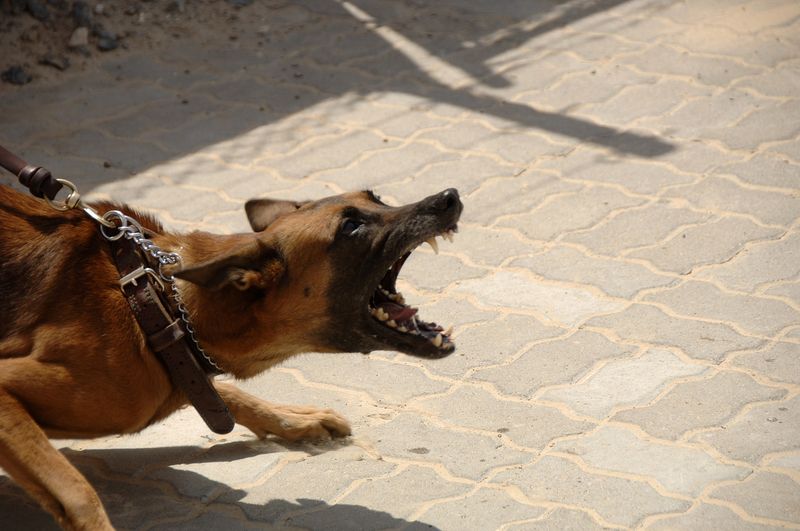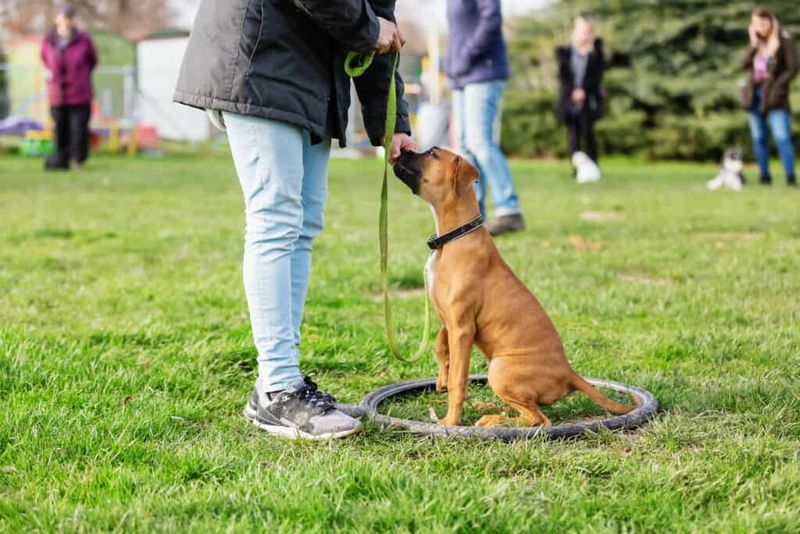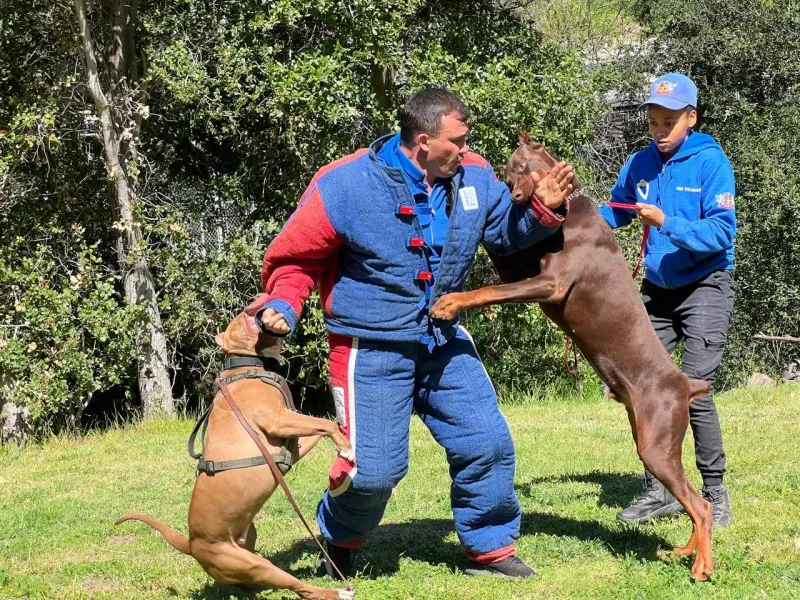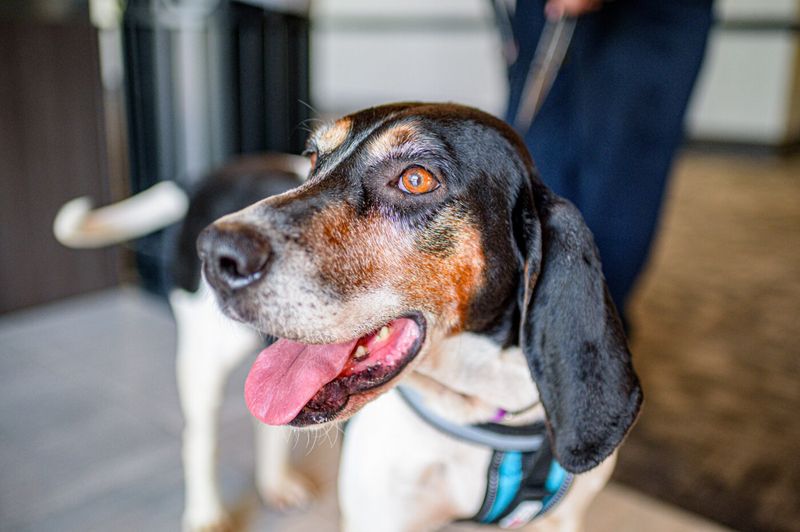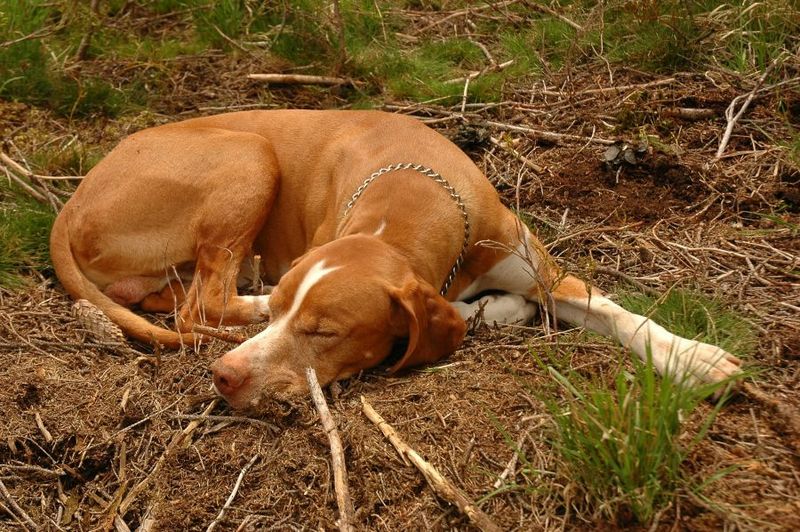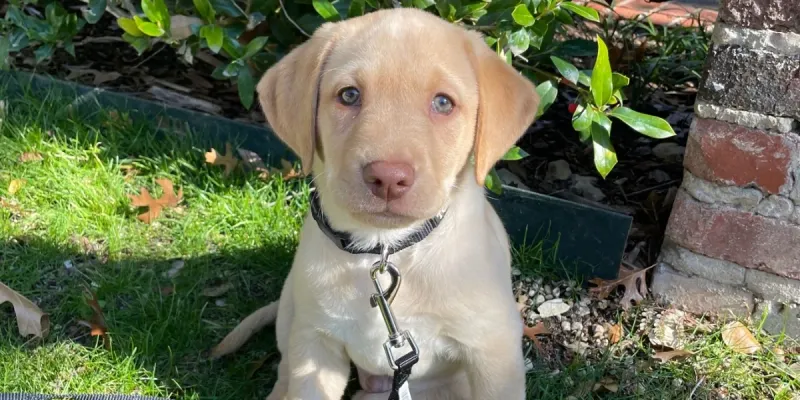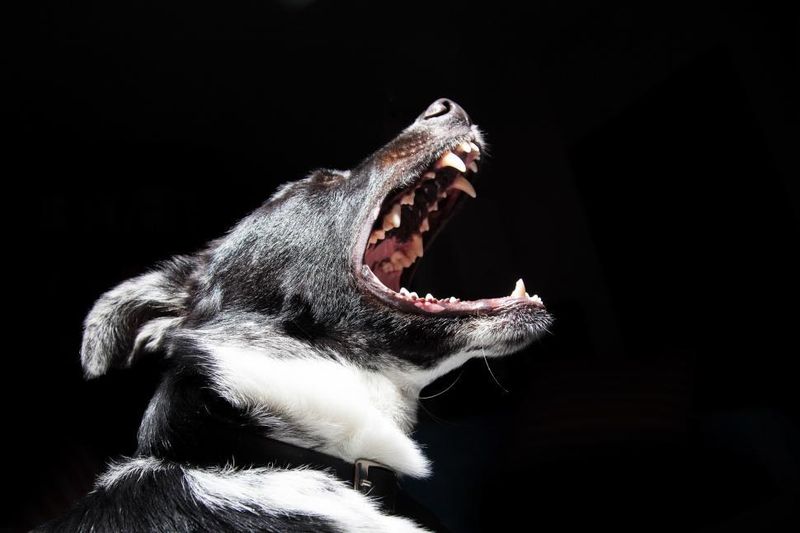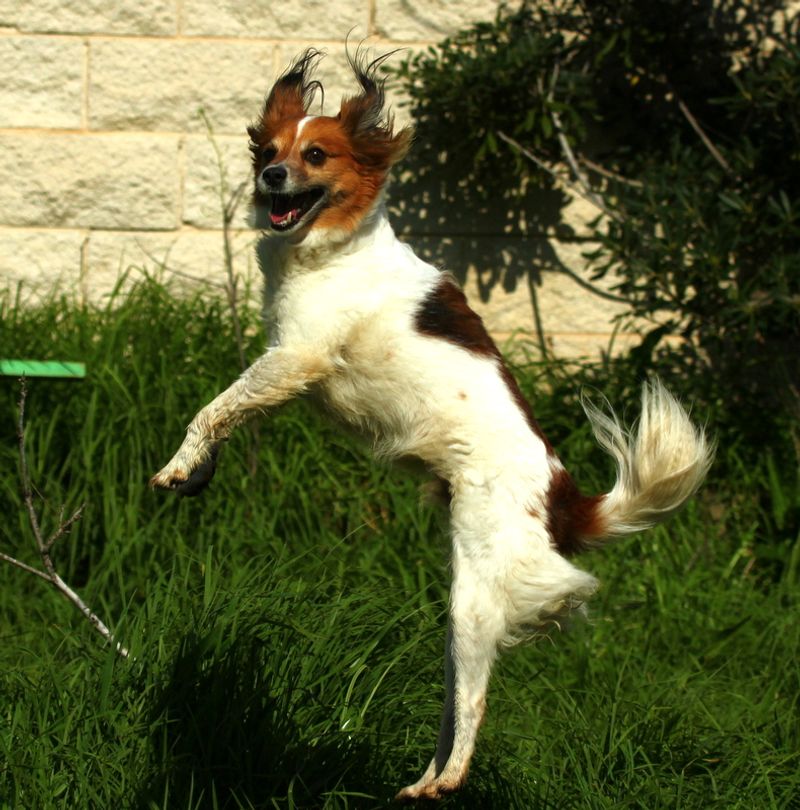Reactive behavior in dogs can be challenging for pet owners. Recognizing the signs and understanding how training can help is crucial in managing these behaviors. Here’s a guide to 19 signs that your dog may be reactive, along with strategies to help calm them.
Lunging on the leash
Leash lunging can be a frustrating experience for both dog and owner. This behavior often signals a reactive response to stimuli such as another dog or a passing bicycle.
Understanding the root of this reaction is important. Some dogs lunge out of excitement, while others might feel threatened. Teaching a dog to focus on you through commands like ‘watch me’ can redirect their attention.
Patience and consistency in training, combined with rewarding calm behavior, can make walks enjoyable again.
Growling or snapping during walks
Growling or snapping during walks can be a sign of fear or discomfort. A dog may feel the need to protect itself when encountering unfamiliar dogs or people.
It’s essential to address this behavior calmly to avoid escalating the situation. Use distance as a tool; cross the street or change direction to help your dog feel more secure.
Training that includes desensitization to triggers can gradually build a dog’s confidence, reducing the need for defensive behaviors.
Pacing or whining when seeing triggers
Pacing or whining in the presence of triggers highlights a dog’s anxiety. This behavior indicates discomfort or anticipation of a perceived threat.
Engaging your dog with toys or commands can interrupt this cycle, offering a distraction from the source of stress. Over time, this reduces the association between the trigger and anxiety.
Behavior modification techniques, including positive exposure to triggers, can help alleviate these anxious behaviors.
Fixating on other dogs or people
Fixation on other dogs or people can be another telltale sign of reactivity. This intense focus often precedes further reactive behaviors, such as lunging or barking.
Breaking this fixation is important for reducing reactivity. Commands that redirect attention, like ‘look at me,’ can provide a helpful distraction.
Positive reinforcement for redirecting attention can encourage your dog to respond more calmly in social settings, reducing stress for both of you.
Raised hackles (fur along the back)
Raised hackles occur when a dog is highly aroused or agitated. This involuntary reaction can signify excitement, fear, or aggression, depending on the context.
Observing the situation and environment can provide clues about the underlying cause. Training to associate certain cues with calming rewards can help manage this response.
Socialization and gradual exposure to different environments can reduce the frequency of raised hackles, helping your dog to relax.
Tail held stiff and high
A stiff, high tail often signals alertness or dominance. This posture can indicate that a dog is prepared to react, whether due to excitement or aggression.
Understanding body language can help you anticipate your dog’s next move. Redirecting their attention to a more positive focus, like a favorite toy, can prevent escalation.
Consistent training and reinforcement of calm behaviors can promote a more relaxed tail posture, indicating a more at-ease state.
Excessive barking at strangers or other dogs
A hyper-vigilant dog may bark excessively at strangers or other dogs. This behavior often stems from anxiety or a protective instinct. When a dog perceives a threat, barking acts as an alert to both the dog and its owner.
Calming techniques, like positive reinforcement, can help manage this behavior. By rewarding quiet moments, a dog learns that silence brings treats. Over time, this reduces the need to bark at every passerby.
Training classes can also bolster your dog’s confidence, transforming anxiety into a calm demeanor.
Dilated pupils
Dilated pupils are a physical sign of heightened arousal or stress. This response can occur during moments of fear or excitement, indicating your dog is on high alert.
Monitoring environmental triggers can help identify what causes this reaction. Training that involves gradual desensitization to these triggers can reduce this response over time.
By teaching your dog to associate calming signals with positive outcomes, you can help them manage stress more effectively.
Heavy panting under low-stress situations
Heavy panting in situations that aren’t physically demanding can be a sign of anxiety or stress. This physiological response indicates your dog is uncomfortable or overwhelmed.
Identifying stressors in the environment is the first step in alleviating this behavior. Introducing calming routines and safe spaces can help your dog feel more secure.
Training that focuses on relaxation techniques, like deep breathing or settling exercises, can be beneficial in managing panting.
Freezing or stiff body posture
A frozen or stiff body posture in dogs often indicates fear or aggression. This behavior can be a precursor to more reactive responses if not managed properly.
Recognizing this sign allows you to intervene before escalation occurs. Commands that encourage movement, such as ‘come’ or ‘sit,’ can break the tension.
Training that builds confidence in various settings can help reduce the instances of freezing, promoting a more fluid and relaxed movement.
Pulling away or refusing to move
When a dog pulls away or refuses to move, it often indicates discomfort or fear. This behavior can stem from unfamiliar environments or intimidating stimuli.
Patience is key in these situations. Encouraging your dog with treats or gentle coaxing can help build trust and confidence.
Gradual exposure and positive associations with challenging environments can foster a sense of security, alleviating reluctance to move.
Yawning or lip licking when stressed
Yawning or lip licking in dogs can be signs of stress or anxiety. These subtle cues often precede more noticeable reactive behaviors.
Recognizing these signs early allows for timely intervention. Offering a calming touch or a distraction can redirect your dog’s energy positively.
Training that enhances stress management, like teaching a ‘relax’ command, can help your dog cope better with overwhelming situations.
Avoiding eye contact
Avoiding eye contact is a common sign of submission or discomfort in dogs. This behavior often signals that a dog feels threatened or uneasy.
Creating a safe and nurturing environment can help your dog feel more secure. Encouraging gentle, positive interactions can strengthen trust.
Training that focuses on building confidence through positive reinforcement can gradually reduce avoidance behaviors, fostering more connection.
Sudden trembling or shaking
Trembling or shaking can be an indication of fear or anxiety in dogs. This involuntary reaction often occurs in stressful situations or new environments.
Providing comfort and reassurance, such as a favorite blanket or toy, can help ease these feelings. Training that involves gradual exposure to stressors can also be effective.
Building a routine with consistent, positive experiences can help your dog feel more at ease, reducing instances of trembling.
Overreaction to noises
Some dogs have a heightened sensitivity to noises, leading to overreactions like barking or jumping. This behavior can be unsettling for both the dog and owner.
Desensitizing your dog to various sounds through gradual exposure can help them adjust. Training with calming techniques, like focusing on a soothing voice, can provide comfort.
Over time, these methods can reduce sensitivity to noises, fostering a more serene home environment.
Redirecting aggression (biting leash or owner)
Redirected aggression occurs when a dog is frustrated by an unreachable target, leading them to bite the leash or owner. This is often a sign of pent-up energy or stress.
Providing alternative outlets for energy, like interactive play or puzzle toys, can reduce frustration. Training that focuses on impulse control can also be beneficial.
With consistent effort, redirected aggression can be managed, leading to more harmonious interactions between you and your dog.
Jumping or spinning in frustration
Jumping or spinning can be a sign of frustration or overstimulation. This behavior often signals that your dog needs an outlet for their energy or stress.
Channeling this energy into structured activities, like agility training, can provide a positive focus. Commands that encourage calmness can also help mitigate this behavior.
Engaging your dog in mentally stimulating activities can reduce the need for such physical expressions of frustration.
Difficulty calming down after a trigger
Struggling to calm down after encountering a trigger is a common issue for reactive dogs. This can lead to prolonged stress and anxiety if not addressed.
Training that includes relaxation techniques and rewarding calm behavior can foster quicker recovery times. Consistent practice can help reinforce these calming strategies.
Building resilience through exposure and positive reinforcement can aid in managing these prolonged reactions more effectively.
Hyper-vigilance or scanning the environment constantly
Hyper-vigilance is a sign that a dog is on high alert, constantly scanning for perceived threats. This behavior can be exhausting and stress-inducing for your pet.
Redirecting focus through commands or engaging toys can interrupt this cycle. Training that promotes relaxation and trust in safe environments is essential.
With time and patience, you can help your dog feel more at ease, reducing the need for constant environmental scanning.


